Abstract
A long term follow up study is presented of 73 patients with myasthenia gravis, living in Amsterdam between 1926 and 1965. In the period 1961-65 the annual incidence was 3.1, the prevalence 53 per million. Maximum severity of the disease occurred during the first seven years after onset in 87%. Eighteen (29%) patients died, of whom eight had a thymoma (TH). Spontaneous improvement or remission occurred at any time during the follow up. At the end of the study (1985) 16 (22%) patients were in a complete clinical remission, 13 (18%) had improved considerably (3 with prednisone), 12 (16%) had improved moderately, 12 (16%) had remained unchanged and two had deteriorated. If the early deaths are excluded the outcome is similar in the early and the late onset group without TH. Patients with TH had a less favourable course. Associated autoimmune diseases were diagnosed in 25% (n = 58). Because most of these patients were treated with anticholinesterases only, the evolution of their clinical state represents the natural course of MG.
Full text
PDF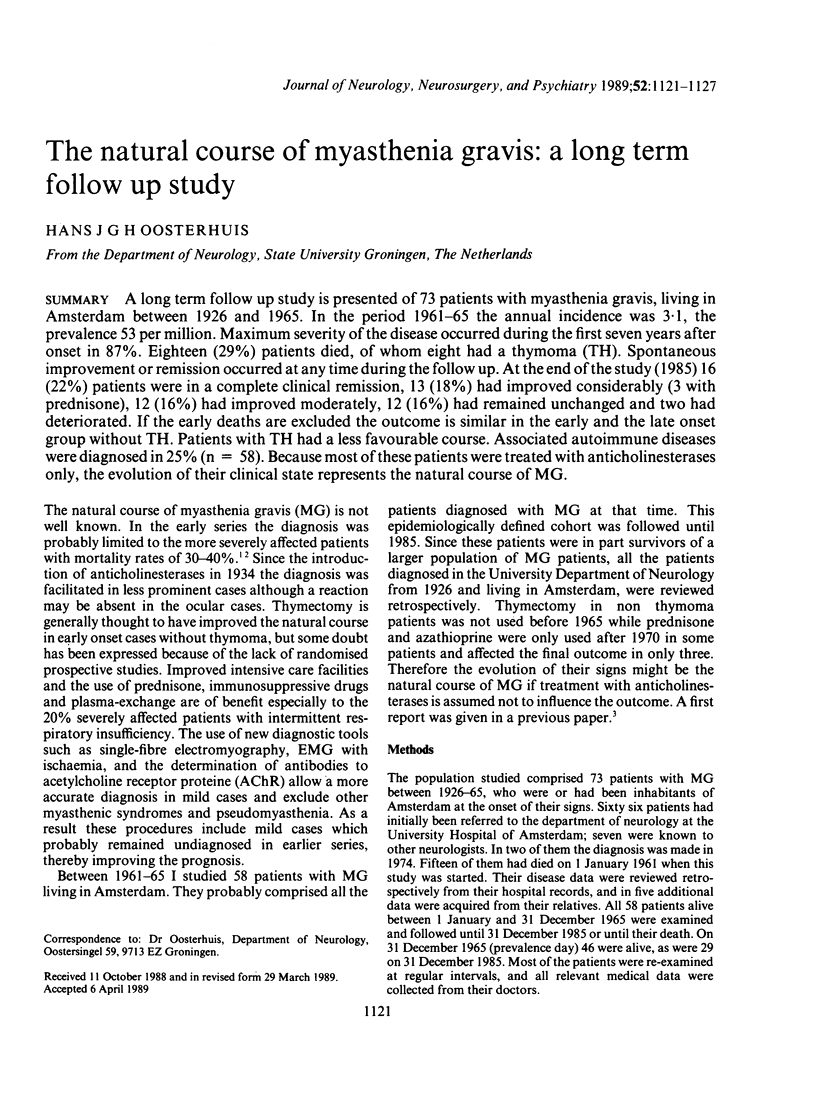
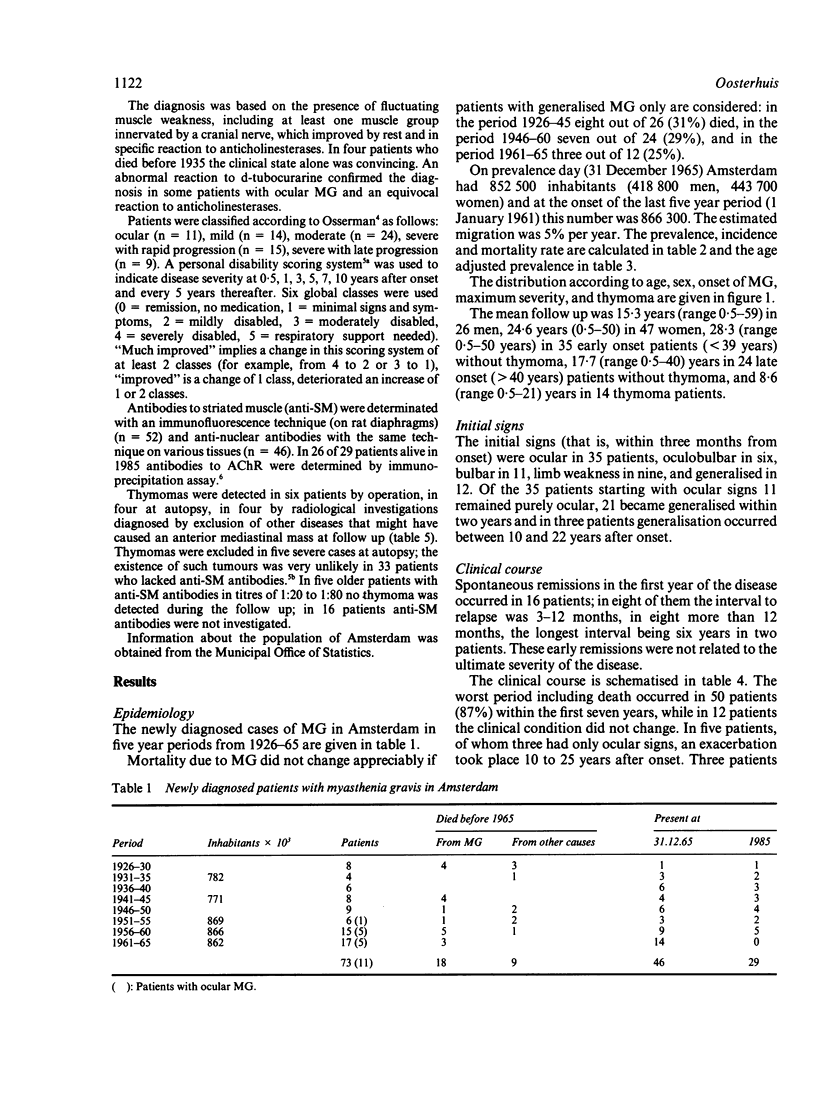
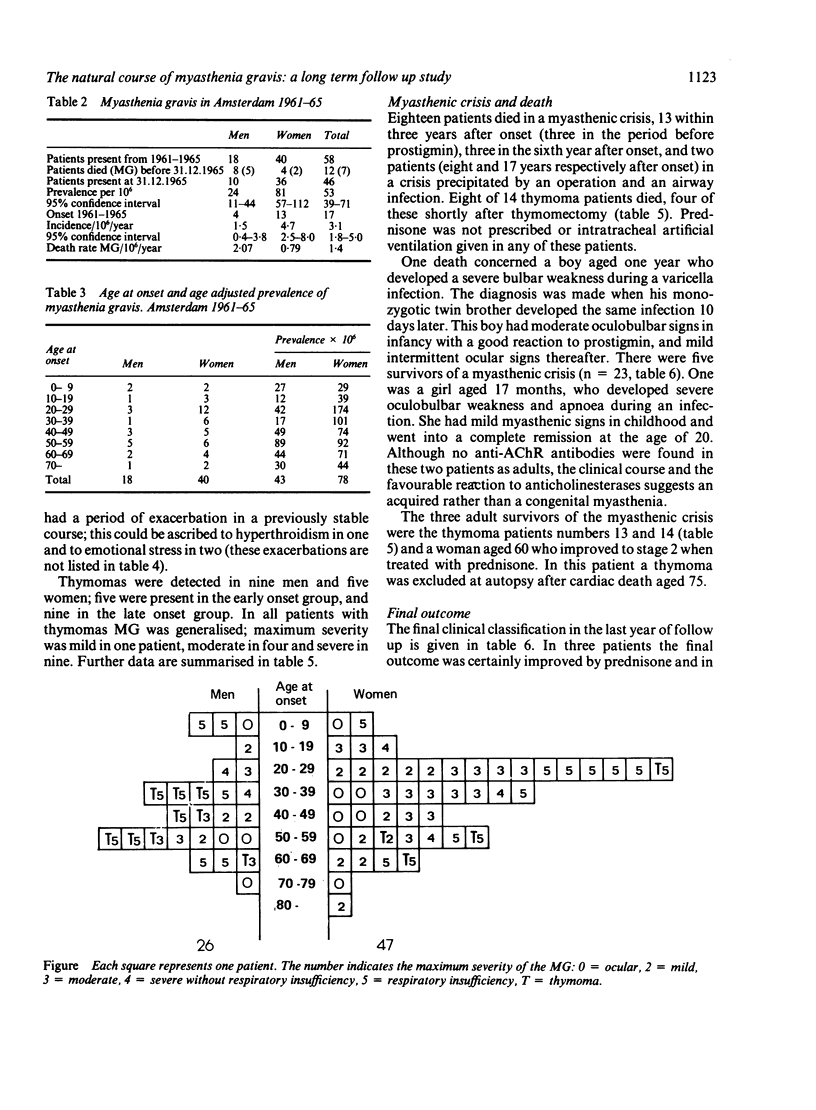
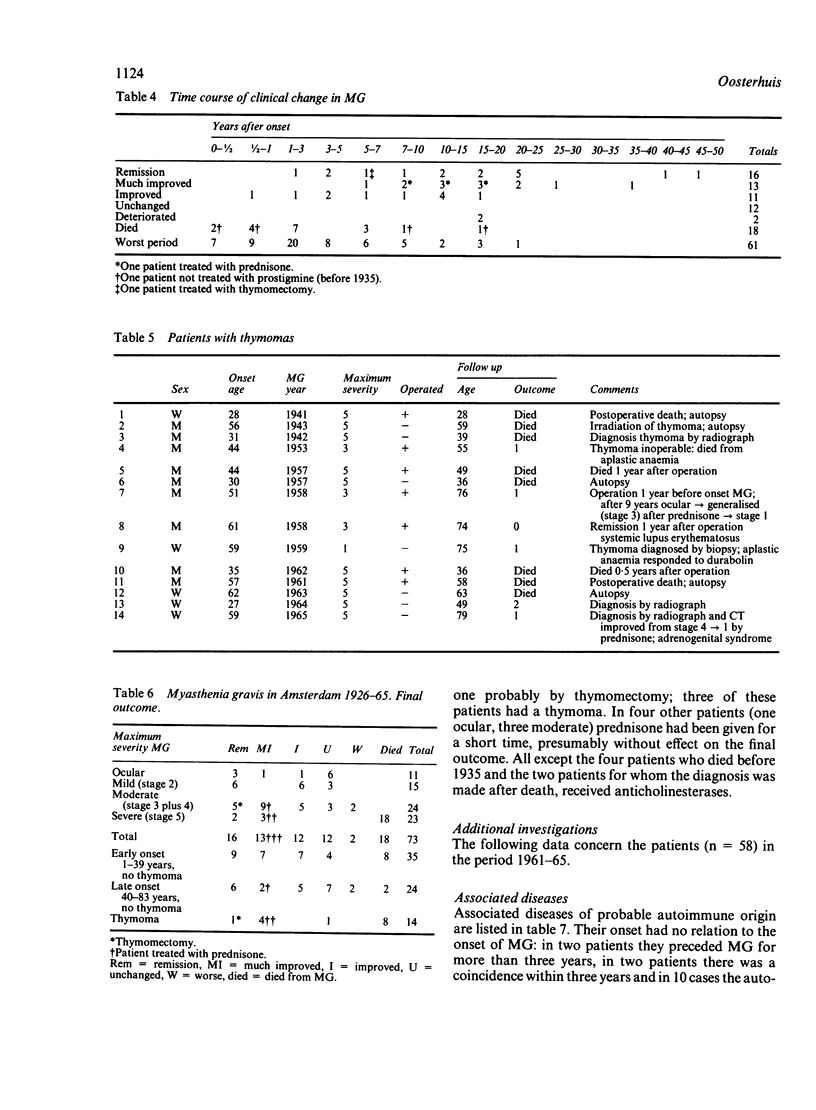
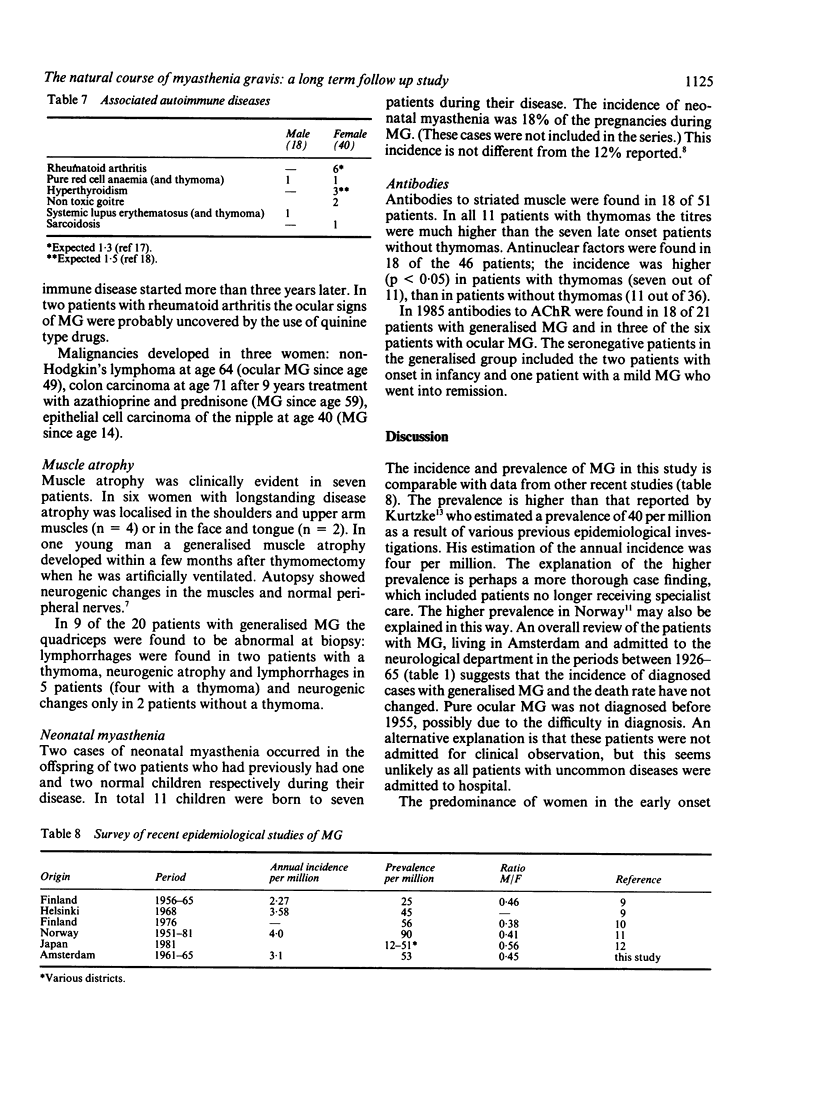
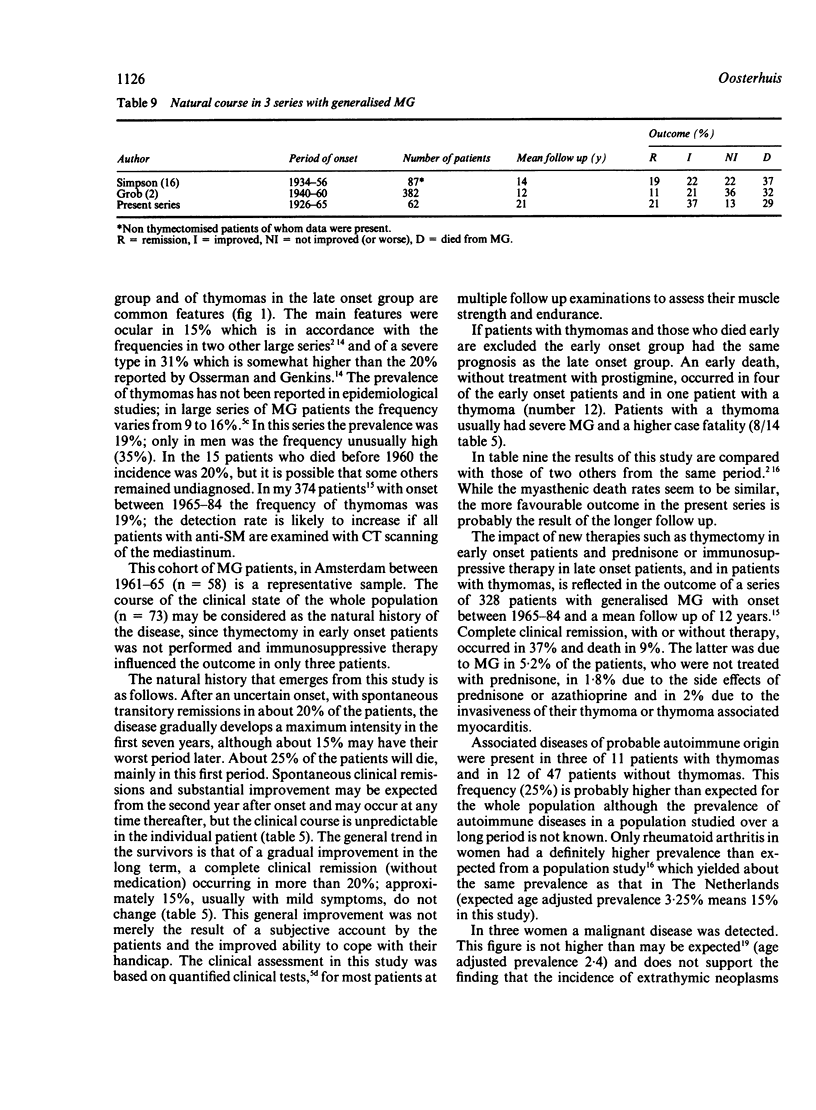
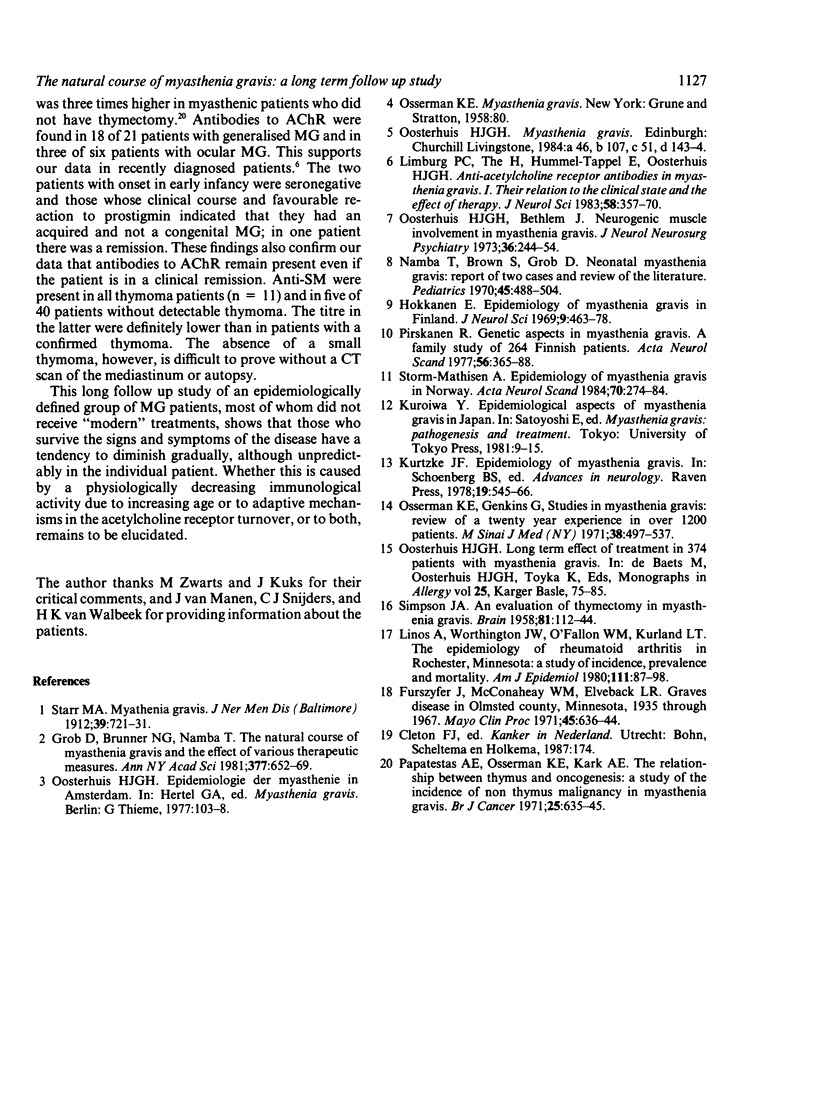
Selected References
These references are in PubMed. This may not be the complete list of references from this article.
- Furszyfer J., Kurland L. T., McConahey W. M., Elveback L. R. Graves' disease in Olmsted County, Minnesota, 1935 through 1967. Mayo Clin Proc. 1970 Sep;45(9):636–644. [PubMed] [Google Scholar]
- Grob D., Brunner N. G., Namba T. The natural course of myasthenia gravis and effect of therapeutic measures. Ann N Y Acad Sci. 1981;377:652–669. doi: 10.1111/j.1749-6632.1981.tb33764.x. [DOI] [PubMed] [Google Scholar]
- Hokkanen E. Epidemiology of myasthenia gravis in Finland. J Neurol Sci. 1969 Nov-Dec;9(3):463–478. doi: 10.1016/0022-510x(69)90090-2. [DOI] [PubMed] [Google Scholar]
- Limburg P. C., The T. H., Hummel-Tappel E., Oosterhuis H. J. Anti-acetylcholine receptor antibodies in myasthenia gravis. Part 1. Relation to clinical parameters in 250 patients. J Neurol Sci. 1983 Mar;58(3):357–370. doi: 10.1016/0022-510x(83)90095-3. [DOI] [PubMed] [Google Scholar]
- Linos A., Worthington J. W., O'Fallon W. M., Kurland L. T. The epidemiology of rheumatoid arthritis in Rochester, Minnesota: a study of incidence, prevalence, and mortality. Am J Epidemiol. 1980 Jan;111(1):87–98. doi: 10.1093/oxfordjournals.aje.a112878. [DOI] [PubMed] [Google Scholar]
- Namba T., Brown S. B., Grob D. Neonatal myasthenia gravis: report of two cases and review of the literature. Pediatrics. 1970 Mar;45(3):488–504. [PubMed] [Google Scholar]
- Oosterhuis H., Bethlem J. Neurogenic muscle involvement in myasthenia gravis. A clinical and histopathological study. J Neurol Neurosurg Psychiatry. 1973 Apr;36(2):244–254. doi: 10.1136/jnnp.36.2.244. [DOI] [PMC free article] [PubMed] [Google Scholar]
- Osserman K. E., Genkins G. Studies in myasthenia gravis: review of a twenty-year experience in over 1200 patients. Mt Sinai J Med. 1971 Nov-Dec;38(6):497–537. [PubMed] [Google Scholar]
- Pirskanen R. Genetic aspects in myasthenia gravis. A family study of 264 Finnish patients. Acta Neurol Scand. 1977 Nov;56(5):365–388. [PubMed] [Google Scholar]
- SIMPSON J. A. An evaluation of thymectomy in myasthenia gravis. Brain. 1958 Mar;81(1):112–144. doi: 10.1093/brain/81.1.112. [DOI] [PubMed] [Google Scholar]
- Storm-Mathisen A. Epidemiology of myasthenia gravis in Norway. Acta Neurol Scand. 1984 Oct;70(4):274–284. doi: 10.1111/j.1600-0404.1984.tb00825.x. [DOI] [PubMed] [Google Scholar]


